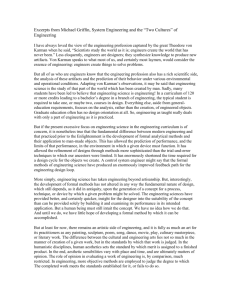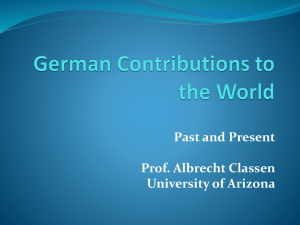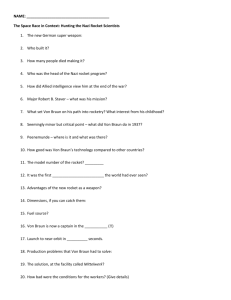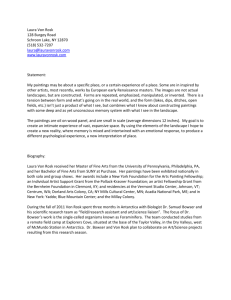theodore von karman
advertisement
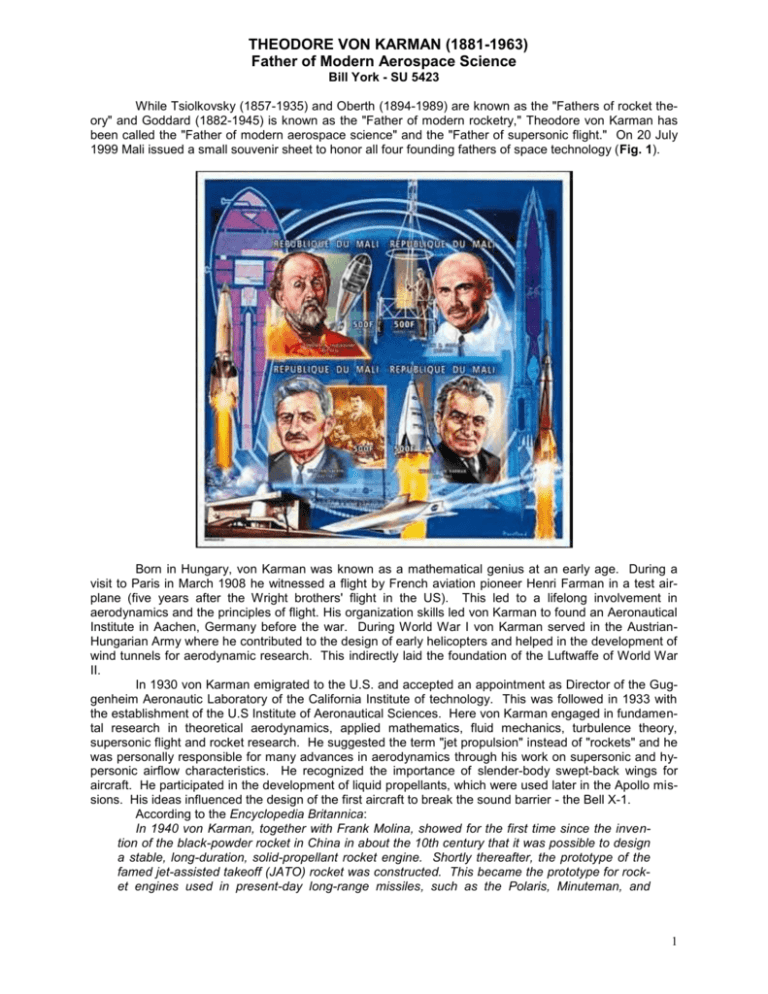
THEODORE VON KARMAN (1881-1963) Father of Modern Aerospace Science Bill York - SU 5423 While Tsiolkovsky (1857-1935) and Oberth (1894-1989) are known as the "Fathers of rocket theory" and Goddard (1882-1945) is known as the "Father of modern rocketry," Theodore von Karman has been called the "Father of modern aerospace science" and the "Father of supersonic flight." On 20 July 1999 Mali issued a small souvenir sheet to honor all four founding fathers of space technology (Fig. 1). Born in Hungary, von Karman was known as a mathematical genius at an early age. During a visit to Paris in March 1908 he witnessed a flight by French aviation pioneer Henri Farman in a test airplane (five years after the Wright brothers' flight in the US). This led to a lifelong involvement in aerodynamics and the principles of flight. His organization skills led von Karman to found an Aeronautical Institute in Aachen, Germany before the war. During World War I von Karman served in the AustrianHungarian Army where he contributed to the design of early helicopters and helped in the development of wind tunnels for aerodynamic research. This indirectly laid the foundation of the Luftwaffe of World War II. In 1930 von Karman emigrated to the U.S. and accepted an appointment as Director of the Guggenheim Aeronautic Laboratory of the California Institute of technology. This was followed in 1933 with the establishment of the U.S Institute of Aeronautical Sciences. Here von Karman engaged in fundamental research in theoretical aerodynamics, applied mathematics, fluid mechanics, turbulence theory, supersonic flight and rocket research. He suggested the term "jet propulsion" instead of "rockets" and he was personally responsible for many advances in aerodynamics through his work on supersonic and hypersonic airflow characteristics. He recognized the importance of slender-body swept-back wings for aircraft. He participated in the development of liquid propellants, which were used later in the Apollo missions. His ideas influenced the design of the first aircraft to break the sound barrier - the Bell X-1. According to the Encyclopedia Britannica: In 1940 von Karman, together with Frank Molina, showed for the first time since the invention of the black-powder rocket in China in about the 10th century that it was possible to design a stable, long-duration, solid-propellant rocket engine. Shortly thereafter, the prototype of the famed jet-assisted takeoff (JATO) rocket was constructed. This became the prototype for rocket engines used in present-day long-range missiles, such as the Polaris, Minuteman, and 1 Poseidon of the U.S. armed forces. In 1941 von Karman participated [with Frank Molina] in the founding of the Aerojet General Corporation, the first American manufacturer of liquid and solid propellant rocket engines. In 1944 he became the co-founder [with Frank Molina] of the present NASA Jet Propulsion Laboratory at the California Institute of Technology when it undertook America's first governmental long-range missile and space exploration program for the U.S. Ordinance Department. Von Karman was an international scientist and an ardent believer in international cooperation in science. This led him to organize the International Council of the Aeronautical Sciences (1956), the International Academy of Aeronautics at the Von Karman Institute in Brussels (1060) and to actively participate in the organization of the 1st International Symposium on the Basic Environmental Problems of Man in Space (1962). His research helped shape both scientific and political history. In 1968 von Karman was elected to the Aerospace Hall of Fame in San Diego, CA. His other honors include the U.S. Medal of Merit (1946), the Franklin Gold Medal (1948) and the National Medal for Science (1963). In his honor craters are named for him on both the Moon and Mars. On 3 Aug 1992 Hungary issued a stamp for its native son "Karman Todor" (Fig. 2). The U.S also issued a stamp in his honor on 31 Aug 1992 (Fig. 3), designed by Chris Calle. It was issued at the World Space Congress in Washington, DC. An FDC is shown here (Fig. 4) with additional covers related to this issue. Thanks to Dr. James R. Rose of the JPL Stamp Club for supplying the JPL covers. The U.S. stamp was issued after nearly two decades of petitioning by USC Professor Dr. Shirley Thomas. 2 Dr. Theodore von Karman was not only a mathematical genius, he was an educator and a writer, credited with over 150 books and articles on aeronautical research. He was also very interested in poetry and literature and, according to many sources, he always had an appropriate story for any occasion. Like the other founding fathers of space technology, von Karman was a visionary. He was an optimist and believed in the future, despite prevailing difficulties in the world. [] Primary references used for this article: http://www.th.physik.uni-frankfurt.de/~jr/physstamps.html (Hungary stamp - 1992) "Theodore von Karman", http://www.allstar.fiu.edu/aerojava/karman.htm Elizabeth N. Shor, "Karman, Theodore von", http://www.anb.org/articles/13/13-01897.html J.J. O'Connor and E.F. Robertson, "Theodore von Karman," http://www.history.mcs.st andrews.ac.uk/Mathematicians/Karman.html "Theodore von Karman," http://en.wikipedia.org "First Day Cover Store," http://www.Unicover.com/EA40AP5E.htm Faywant H. Arakeri, "Theodore von Karman - Rocket Scientist," Resonance - August 2005 "Karman, Theodore von," Encyclopedia Britannica, http://www.britannica.com/eb/article 3846 "1992 29c Theodore von Karman," http://Sageman.freeservices.com/spacestamps/Karman. html http://www.jplrecclubs.caltech/stamp/JPLSC.CurCov.view.shtml/ (JPL covers - 1992) 3 4 5
